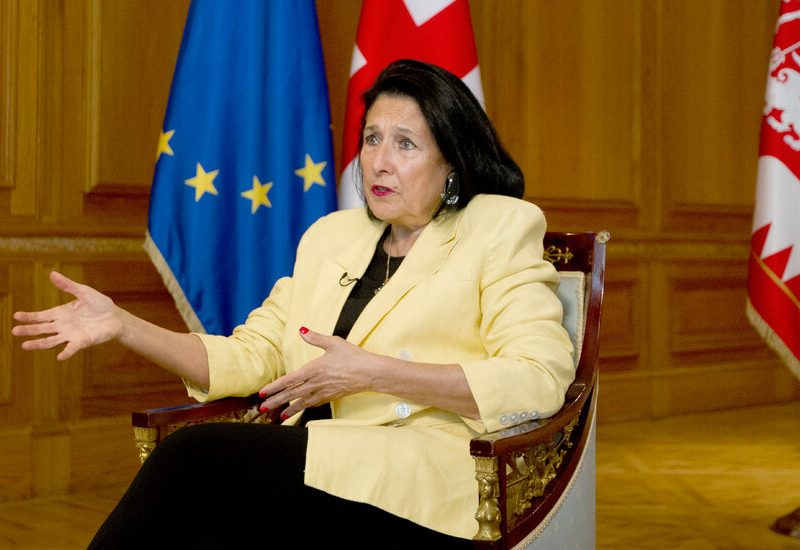In recent years, mental health has become a central subject in childhood and adolescence. Teenagers narrate their psychiatric diagnosis and treatment on TikTok and Instagram. School systems, alarmed by rising levels of distress and self-harm, are introducing preventive coursework in emotional self-regulation and mindfulness.
Now, some researchers warn that we are in danger of overdoing it. Mental health awareness campaigns, they argue, help some young people identify disorders that badly need treatment — but they have a negative effect on others, leading them to over-interpret their symptoms and see themselves as more troubled than they are.
The researchers point to unexpected results in trials of school-based mental health interventions in the United Kingdom and Australia: Students who underwent training in the basics of mindfulness, cognitive behavioral therapy and dialectical behavior therapy did not emerge healthier than peers who did not participate, and some were worse off, at least for a while.
And new research from the United States shows that among young people, “self-labeling” as having depression or anxiety is associated with poor coping skills, like avoidance or rumination.
In a paper published last year, two research psychologists at the University of Oxford, Lucy Foulkes and Jack Andrews, coined the term “prevalence inflation” — driven by the reporting of mild or transient symptoms as mental health disorders — and suggested that awareness campaigns were contributing to it.
“It’s creating this message that teenagers are vulnerable, they’re likely to have problems, and the solution is to outsource them to a professional,” said Dr. Foulkes, a Prudence Trust Research Fellow in Oxford’s department of experimental psychology, who has written two books on mental health and adolescence.
Until high-quality research has clarified these unexpected negative effects, they argue, school systems should proceed cautiously with large-scale mental health interventions.
“It’s not that we need to go back to square one, but it’s that we need to press pause and reroute potentially,” Dr. Foulkes said. “It’s possible that something very well-intended has overshot a bit and needs to be brought back in.”
This remains a minority view among specialists in adolescent mental health, who mostly agree that the far more urgent problem is lack of access to treatment.
About 60 percent of young Americans with severe depression receive no treatment, according to Mental Health America, a nonprofit research group. In crisis, desperate families fall back on emergency rooms, where teens often remain for days before a psychiatric bed opens up. There is good reason to embrace a preventive approach, teaching schoolchildren basic skills that might forestall crises later, experts say.
Dr. Foulkes said she understood that her argument runs counter to that consensus, and when she began to present it, she braced for a backlash. To her surprise, she said, many educators reached out to express quiet agreement.
“There’s definitely a fear about being the one to say it,” she said.
A deflating result
In the summer of 2022, the results of a landmark study on mindfulness training in British classrooms landed — like a lead balloon.
The trial, My Resilience in Adolescence, or MYRIAD, was ambitious, meticulous and expansive, following about 28,000 teenagers over eight years. It had been launched in a glow of optimism that the practice would pay off, improving the students’ mental health outcomes in later years.
Half of the teenagers were trained by their teachers to direct their attention to the present moment — breathing, physical sensations or everyday activities — in 10 lessons of 30 to 50 minutes apiece.
The results were disappointing. The authors reported “no support for our hypothesis” that mindfulness training would improve students’ mental health. In fact, students at highest risk for mental health problems did somewhat worse after receiving the training, the authors concluded.
But by the end of the eight-year project, “mindfulness is already embedded in a lot of schools, and there are already organizations making money from selling this program to schools,” said Dr. Foulkes, who had assisted on the study as a postdoctoral research associate. “And it’s very difficult to get the scientific message out there.”
Why, one might ask, would a mental health program do harm?
Researchers in the study speculated that the training programs “bring awareness to upsetting thoughts,” encouraging students to sit with darker feelings, but without providing solutions, especially for societal problems like racism or poverty. They also found that the students didn’t enjoy the sessions and didn’t practice at home.
Another explanation is that mindfulness training could encourage “co-rumination,” the kind of long, unresolved group discussion that churns up problems without finding solutions.
As the MYRIAD results were being analyzed, Dr. Andrews led an evaluation of Climate Schools, an Australian intervention based on the principles of cognitive behavioral therapy, in which students observed cartoon characters navigating mental health concerns and then answered questions about practices to improve mental health.
Here, too, he found negative effects. Students who had taken the course reported higher levels of depression and anxiety symptoms six months and 12 months later.
Co-rumination appears to be higher in girls, who tend to come into the program more distressed, as well as more attuned to their friends, he said. “It might be,” he said, “that they kind of get together and make things a little bit worse for each other.”
Dr. Andrews, a Wellcome Trust research fellow, has since joined an effort to improve Climate Schools by addressing negative effects. And he has concluded that schools should slow down until “we know the evidence base a bit more.” Sometimes, he said, “doing nothing is better than doing something.”
The awareness paradox
One problem with mental health awareness, some research suggests, is that it may not help to put a label to your symptoms.
Isaac Ahuvia, a doctoral candidate at Stony Brook University, recently tested this in a study of 1,423 college students. Twenty-two percent “self-labeled” as having depression, telling researchers “I am depressed” or “I have depression,” but 39 percent met the diagnostic criteria for depression.
He found that the students who self-labeled felt that they had less control over depression and were more likely to catastrophize and less likely to respond to distress by putting their difficulties in perspective, compared with peers who had similar depression symptoms.
Jessica L. Schleider, a co-author of the self-labeling study, said this was no surprise. People who self-label “appear to be viewing depression as a biological inevitability,” she said. “People who don’t view emotions as malleable, view them as set and stuck and uncontrollable, tend to cope less well because they don’t see a point to trying.”
But Dr. Schleider, an associate professor of medical social sciences at Northwestern University and the director of the university’s Lab for Scalable Mental Health, pushed back on the prevalence inflation hypothesis. She disagreed with the claim that students are overdiagnosing themselves, noting that Mr. Ahuvia’s findings suggest otherwise.
Awareness campaigns are bound to have multiple effects, helping some students and not others. And ultimately, she argued, the priority for public health should be reaching young people in the most distress.
“The urgency of the mental health crisis is so clear,” she said. “In the partnerships that I have, the emphasis is on the kids truly struggling right now who have nothing — we need to help them — more so than a possible risk for a subset of kids who aren’t really struggling.”
Maybe, she said, we need to look beyond the “universal, school-assembly-style approach,” to targeted, light-touch interventions, which research has shown can be effective at decreasing anxiety and conduct disorders, especially in younger children.
“There is a risk of throwing the baby out with the bathwater,” Dr. Schleider said. “The response can’t be ‘Forget all of it.’ It should be ‘What about this intervention was unhelpful?’”
Other researchers echoed her concern, pointing to studies that show that on average, students benefit from social and emotional learning courses.
One of the largest, a 2023 meta-analysis of 252 classroom programs in 53 countries, found that students who participated performed better academically, displayed better social skills and had lower levels of emotional distress or behavioral problems. In that context, negative effects in a handful of trials appear modest, the researchers said.
“We clearly have not figured out how to do them yet, but I can’t imagine any population-based intervention that the field got right the first time,” said Dr. Andrew J. Gerber, the president and medical director of Silver Hill Hospital and a practicing child and adolescent psychiatrist.
“Really, if you think about almost everything we do in schools, we don’t have great evidence for it working,” he added. “That doesn’t mean we don’t do it. It just means that we’re constantly thinking about ways to improve it.”
‘We want everyone to have it’
These debates are taking place a long way away from classrooms, where mental health curriculums are increasingly commonplace.
Allyson Kangisser, a counselor at Woodsdale Elementary School in Wheeling, W.Va., said the focus in her school is on basic coping skills. In the early grades, students are asked, “What things can you do to take care of yourself when you’re having big feelings?”
Starting in third grade, they take on more complex material, such as watching cartoon characters to distinguish transient stress from chronic conditions like depression. “We’re not trying to have them diagnose themselves,” Ms. Kangisser said. “We are saying, what do you feel — this one? Or this one?”
At the school’s sixth annual mental health fair last month, Woodsdale students walked through a giant inflatable brain, its lobes neatly labeled. They did yoga stretches and talked about regulating their emotions. Ms. Kangisser said the event is valuable precisely because it is universal, so troubled children are not singled out.
“The mental health fair, everybody does it,” she said. “It’s not ‘You need it, and you don’t.’ We want everyone to have it, because you just never know.”
By the time the students reach college, they will have absorbed enormous amounts of information about mental health — from school, but also from social media and from one another.
Dr. Jessica Gold, chief wellness officer for the University of Tennessee system, said the college students she sees are recognizably different — more comfortable speaking about their emotions and more willing to be vulnerable. They also overuse diagnostic terms and have the self-assurance to question a psychiatrist’s judgment.
“It’s sort of a double-edged sword,” she said. “We want people to talk about this more, but we don’t want that to lead to overdiagnosis or incorrect diagnosis or overtreatment. We want it to lead to normalizing of having feelings.”
Lucy Kim, a Yale senior who has lobbied for better mental health support on campus, described the prevalence inflation hypothesis as “disheartening, dismissive and potentially dangerous,” providing another way to discount the experiences of young people.
“As a college student, I see a generation of young people around me impacted by a depth and breadth of loneliness, exhaustion and disillusionment suggestive of a malaise that goes deeper than the general vicissitudes of life,” said Ms. Kim, 23.
Overdiagnosis does happen, she said, and so does glorification of mental health disorders. But stigma and barriers to treatment remain the bigger problem. “I can confidently say I have never heard anyone respond to disclosures of depression with ‘That’s so cool, I wish I had that, too,’” she said.



